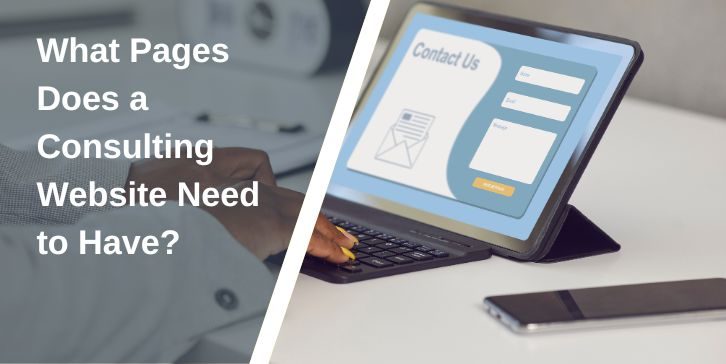On-page SEO can be a little more challenging than off-page SEO.
By using the on-page SEO techniques in this guide, you’ll (hopefully) see an increase in your rankings and conversions.
Here are some of the best on-page SEO techniques that you should be using:
On-Page SEO Techniques
Your Title

If people want to know what your article or web page is about, they’ll most likely start by reading your title.
Google does the same thing.
To know what your webpage is about, Google checks a lot of things, and your title is one of them.
There are several things that you can do to make your title more attractive to people and search engines alike.
First things first, your title should be unique. If you have multiple web pages with the same title, they’ll most likely compete with each other for ranking on the search engine’s results page.
Also, you’ll want to include your target keyword as early on and as naturally as you can in your title. Remember not to stuff keywords into your title. People aren’t going to enjoy reading the same phrase multiple times, neither is a search engine.
One tip that will help you write great titles is to make them short. Shorter titles get the job done faster. Ideally, your title should be under or around 60 characters.
If you can include emotions in your title, that would be great as well. A title with a sentiment, positive or negative, can increase your click-through-rate slightly.
Another thing, don’t clickbait people. If your title is misleading, people will be disappointed, and so will Google. Your title advertises your content. Don’t promote something that you is clearly not selling.
Focus on the Meta
Your meta description acts as the copy (sales pitch) for your website. It’s the piece of text you see under your title. Not focusing on the meta is a mistake that a lot of rookie SEOs make.
Keep your meta descriptions short and to the point. Try to write a compelling reason why anyone should check out your website.
Make sure to add a keyword or two if they can be naturally included in the meta description.
Proper Keyword Usage

Keywords are a vital part of on-page SEO techniques.
Proper keyword research is the first thing that you need to do. Use a tool like Google Keywords Planner (Free!), Orbitype SEO (Free Plan), or Ahrefs (paid but worth every penny) for your keyword research.
You should also be looking at the type of content your competitors are posting and the keywords that they are targeting.
Once you have a list of relevant keywords, you need to start using them in your content.
But be warned, Google has changed over the years and doesn’t like keyword stuffing anymore.
Back in the day, SEOs used to push out content that was explicitly written for search engines and not very user-friendly. The content would be filled to the brim with keywords that made for poor readability and user experience.
Keyword stuffing is now considered to be a bad practice and, as such, should be avoided.
You should still have relevant keywords in your content.
The first thing that you need to do is to optimize your content for the readers. Focus on your readers first. Next, you can include your keywords in a natural, non-intrusive manner.
Content with strategically placed keywords will almost certainly outrank content that is stuffed with keywords.
Make Your Website Responsive
Your website should be responsive, but what does responsive mean exactly?
A responsive website can display all of itself on all kinds of devices. Having a responsive website makes everything on your site fit better.
Having a responsive website has become a necessity for all sites.
More and more people are using their mobile phones and handheld devices to access the internet. A responsive website gives a better experience to the user.
Google started penalizing websites that weren’t mobile-friendly in 2015.
You could have a separate template for mobile, but it wouldn’t be as advantageous. Apart from making your website responsive, you also want to focus on positive user experience. A free live chat app for websites can provide a much more personalized and superior user experience.
A responsive website is a single website that works well for all kinds of devices. Having one URL makes it simpler for bots to crawl your site. It helps avoid any on-page SEO errors, which is excellent!
Internal Linking

In the race to get backlinks from relevant, high authority websites, beginner SEO practitioners often forget the importance of internal linking.
Internal linking helps with the overall ranking of your website.
If one of your articles ranks well on the SERP, it has the potential to boost the ranking for other web pages on your website.
Internal linking can be made easy if you have pillar content.
A pillar content goes over a range of sub-topics and provides a general overview. For casual readers, pillar content gets the job done.
But if your readers want to get more in-depth knowledge, you’re going to have to create articles of related subtopics.
You then need to link these different pieces of content together. Your internal linking job is done.
Interlinking to relevant pages that provide value to the end-user is a great SEO practice. If you want to see a remarkable example of SEO, you should check out Wikipedia.
That being said, you’re not Wikipedia. The best thing that you could do is have a couple of relevant links to other pages on your website.
After you get a little comfortable with internal linking, experiment with the frequency of links that provide the best results for your website.
Optimize Your Images
Images provide a better user experience. Using high-quality photos or images on your website will help catch the attention of the visitor and make him stay on the site for longer.
The first thing you need to do is avoid using stock images that are generic and have been used thousands of times before. These sorts of images hurt your credibility and trustworthiness.
To optimize your images for SEO, you need to give them a proper name. “Pic1.jpeg” or “IMG.jpeg” doesn’t help with SEO. Instead, rename your images and try to use a keyword in the title.
The second thing you should do is to include a keyword in the caption and alt text in your image. You don’t need to go out of your way to do this; try to use something that fits well naturally.
Decrease Page Load Time

You need to make your website fast.
One easy way to make your website faster is to compress your images.
But the most efficient way to decrease your website’s load time is to get better hosting. While better hosting may be more expensive, it more than makes up for it by increasing the of conversions you’ll hopefully understand.
Visitors to your site want to see what they came for immediately. Anything more than a four-second delay is too much and needs to be reduced.
Optimize Your URLs
Shorter URLs simply work better.
A user can remember a shorter, more readable URL. Adjust your URL in a way that allows visitors and search engines to know about the article.
Also, try to keep them (your URLs) as short as you can. More concise and more readable URLs help increase your rankings.
Post Long Content

Long content that is plain bad and does not provide value is going to get outranked by shorter content that is high-quality and offers real value any day of the week, month, or year.
You need to post great content first and foremost. Help the user find what they are looking for, and Google will handsomely reward you.
High-quality content that is on the longer side tends to do exceptionally well on the SERP.
A study conducted by Backlinko indicates that the average number of words that the top-ranking result has on a website is 1890 words.
By having long content, you’re increasing your chances of being ranked for several other keywords.
Ideally, most of your content should be over 1500 words. That way, you’re able to cover a topic adequately and not miss anything important.
Also, remember to post some high-quality, short content as well. Keep things balanced, and you’ll see the benefits in your rankings.
Promote On-Site Engagement
Engagement is high for your website. People only engage or comment on a website that provides them with value.
On-site engagement, such as comments and social shares, tells search engines that your content is pretty good. So good that people are sharing it elsewhere.
Do what the cool kids (popular YouTubers) are doing. Actively ask for engagement.
Ask your readers or viewers what they thought about the content they just viewed and your website in general. Getting feedback from your audience will help you decide what things can be improved or what you’re missing.
Try to respond to all the comments you are getting, even the negative ones. If someone asks a question, answer it to the best of their ability.
Little by little, you’ll have built a community of people who care about your content and who often help each other out when you’re not around.
Conclusion
There’s a lot more to on-page SEO techniques. But this is an excellent guide for starters.
Follow the advice and techniques in this article, and you’re almost sure to see an increase in your rankings and conversions.





Comments are closed.